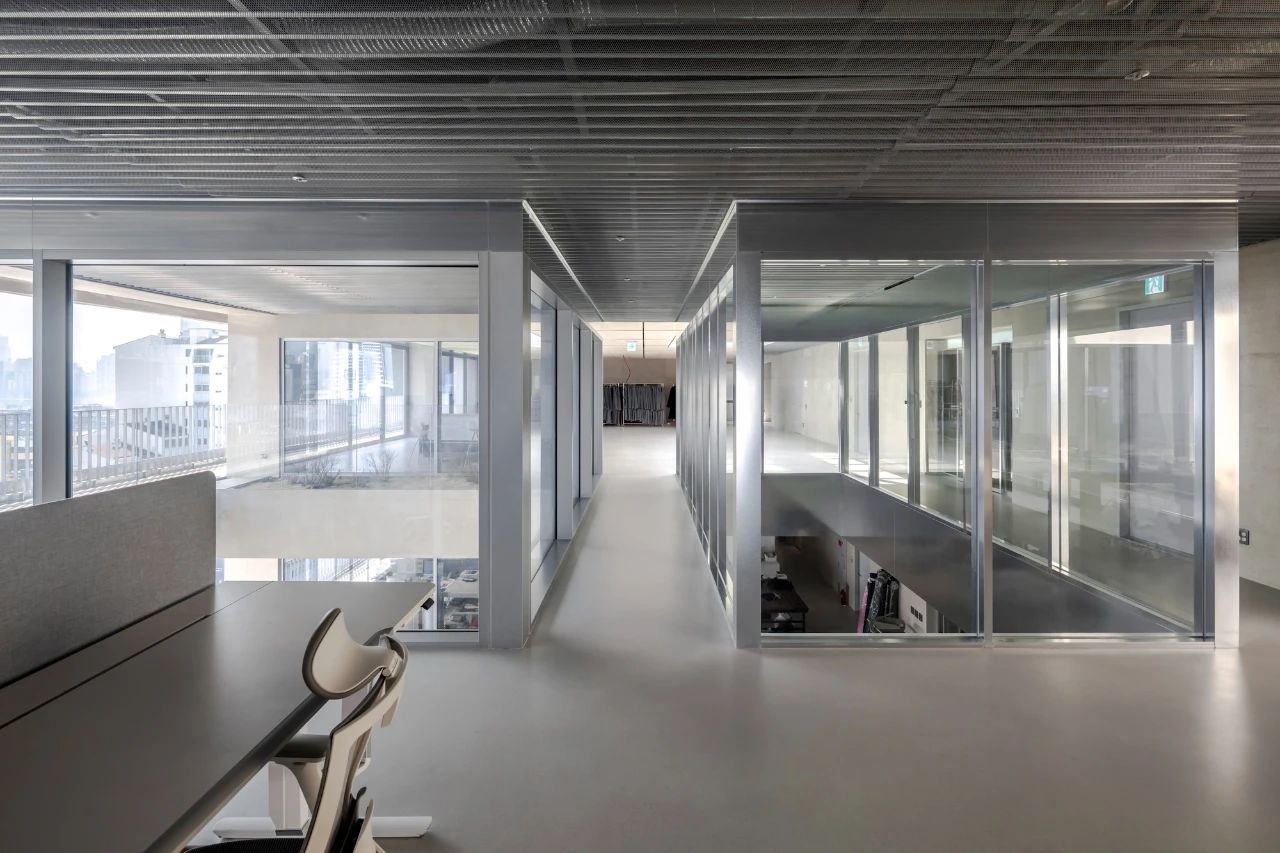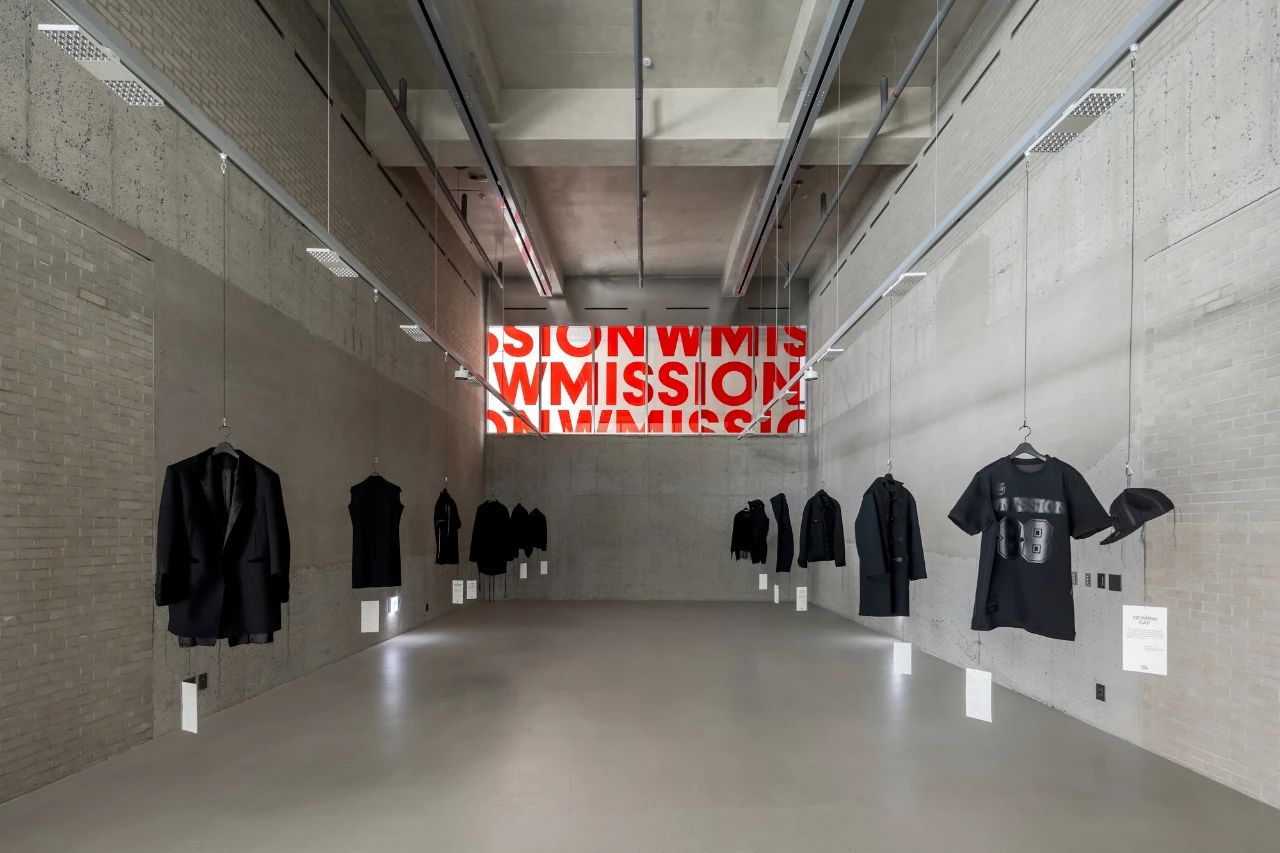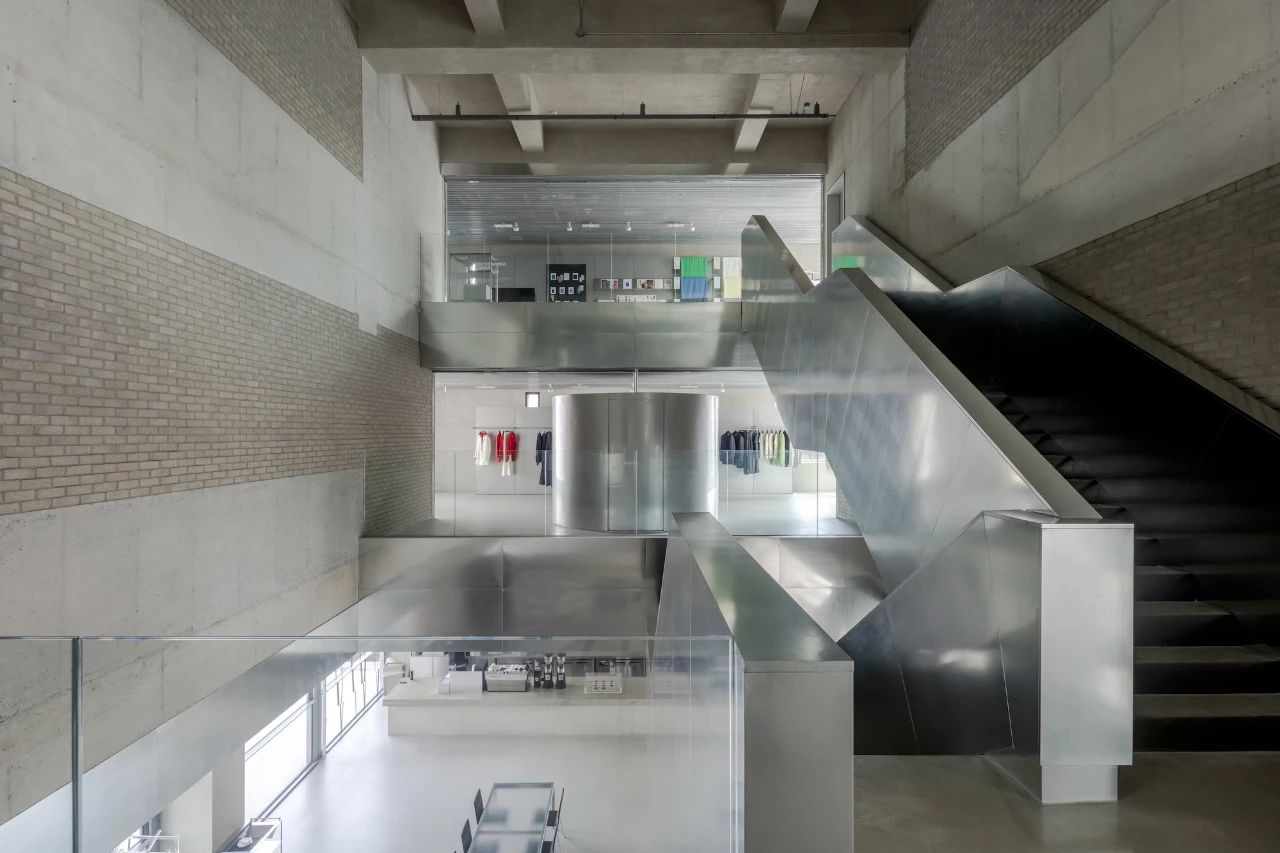红砖 | 办公立面:创造的波浪效果
更新时间:2024-06-26W-Mission 是韩国最高品质的纺织品制造商之一。他们的新总部位于首尔城水洞,以使用传统红砖建造的制鞋工厂大楼而闻名。这个重生的街区已成为韩国首都充满艺术、文化和设计活力的城市地标。
W-Mission is one of the highest-quality textile manufacturers in South Korea. Their new headquarters are located in Seongsu-dong, Seoul, and are known for their shoe manufacturing factory buildings, which were built with traditional red brick. This reborn district has become a vibrant urban landmark for art, culture, and design in the Korean capital.
该设计委托从最能体现客户精神特质的三个主要存在概念出发:神圣、避难所和社区。设计灵感来源于客户出生地的海浪,以及纺织品的材料特性,如轻盈、编织图案、起伏、围合和披露。建筑特色增强了灵性的感觉,其中最主要的是将传统的哥特式高拱立面从内部(大教堂)反转到外部的城市街道。
The commission of this design departs from three main existential concepts that best represent the spiritual character of the client: sacredness, sanctuary, and community. The inspiration for it reflects on the ocean waves of the birthplace of our client and the material properties of textiles, such as lightness, weaving patterns, undulation and enclosure, and disclosure. The architectural features heighten the feeling of spirituality, the main one being the reversal of a traditional Gothic high-arched facade from the interior (of a cathedral) to the exterior urban street.
在纺织协会行政大楼的设计过程中,对石雕帷幔的再现进行了研究,这一直是一个引人入胜的悖论。在这种情况下,传统的砖砌体系统提供了描绘和适应所需曲线的巨大能力。砖砌建筑在首尔有着悠久的历史传统。在这种情况下,所采用的解决方案是一种真正的 "幕墙 "系统,将砖块连接到 "原位 "浇筑的混凝土墙上,作为构建曲线的导向。在数字计算工具的帮助下,设计出了一种非常简单的算法,可以创造出预期的波浪效果,直冲云霄。砖的高度为 520 道,每 24 道增加一块新砖,以达到预期的曲线增长效果。波浪的幅度从三层的 0(波浪的起点)到屋顶线的 170 厘米不等。
The reproduction of drapery in stone sculpture, as researched during the design process of the Administrative Building for the Textilverband, has always represented a captivating paradox. In this case, the traditional brick masonry system offered great capacity to depict and adapt to the desired curve. Brick construction has a long historical tradition in Seoul. The adopted solution, in this case, is a literal ‘curtain wall’ system using bricks attached to a concrete wall cast “in situ,” which serves as a guide for constructing the curve. With the help of a digital computational tool, we could devise a rather simple algorithm for creating the intended wave effect rising up to the sky. With 520 courses of brick height, every 24 courses, a new brick is added to achieve the desired curve growth. The wave amplitude ranges from 0 on the third floor, where it starts, to 170cm at the roof line.
该建筑由3个分层的功能层组成:
The building consists of 3 stratified programmatic layers:
临街的社区区包括 WM 咖啡厅和花园、WMission 学院、工作室和展览空间。三层楼高的中庭衔接了建筑的公共项目。公共空间上方是一个四层的开放式办公区。- W-Mission 总部位于最后三层的顶部区域。办公区、工作室和聚会空间融为一体。在建筑的这一私密区域内,双层挑高的互联空间受到大教堂中殿类型学的启发,引入自然光,唤起人们对精神和冥想环境的向往。所有 3 个区域都设有半室外双高庭院。综合来看,该建筑创造了一种垂直社区,拥有宽敞的室外空间和内部庭院,这些空间相互错落但又相互连接,所有空间都延伸至室外空间和天空,增强了社区感。
The community zone with street frontage that consists of the WM Café and garden, the WMission academy, workshop, and exhibition spaces. A three-floor height atrium articulates the public program of the building. An open office block of four floors is located above the public package. - W-Mission’s headquarters as top zone on the last three floors. Integrated by office program, workshop and gathering spaces. Within this private area of the building, double height interconnected spaces inspired by the typology of the basilica nave introduce natural light that evokes an environment for spirituality and meditation. All 3 zones offer semi-outdoor double height courtyards. Put together; the building creates a kind of vertical neighborhood with generous outdoor pockets and internal patios that are shifted but interconnected, all reaching out to the outdoor space and the sky and reinforcing the feeling of community.
从西面穿过首尔森林公园进入城水洞区的街道上,波浪形的立面成为城市景观的背景。这个具有特色的实心立面容纳了服务项目和垂直交通。相比之下,东立面的室外花园和露台则为汉江和城水洞地区提供了开阔的视野。北立面由看似随意的开口组成,分为三种不同类型,以满足空间的规划要求。
The waving façade acts as a backcloth for the urban perspectives of the streets that lead into Seongsu-dong District from the west across the Seoul Forest Park. This characteristic solid façade houses the service program and the vertical circulations. In contrast, the outdoor gardens and terraces on the east facade offer a wide open view towards the Han River and Seongsu-dong District. The north façade is composed of apparently random openings categorized by three different types that respond to the programmatic requirements of the space.